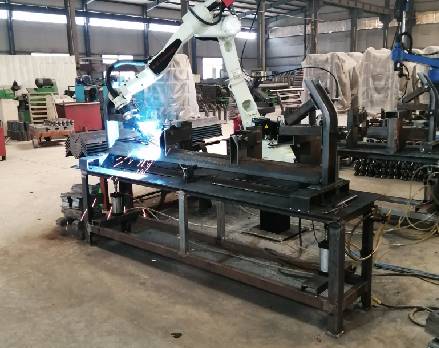 Afrikaans
Afrikaans  Albanian
Albanian  Amharic
Amharic  Arabic
Arabic  Armenian
Armenian  Azerbaijani
Azerbaijani  Basque
Basque  Belarusian
Belarusian  Bengali
Bengali  Bosnian
Bosnian  Bulgarian
Bulgarian  Catalan
Catalan  Cebuano
Cebuano  Corsican
Corsican  Croatian
Croatian  Czech
Czech  Danish
Danish  Dutch
Dutch  English
English  Esperanto
Esperanto  Estonian
Estonian  Finnish
Finnish  French
French  Frisian
Frisian  Galician
Galician  Georgian
Georgian  German
German  Greek
Greek  Gujarati
Gujarati  Haitian Creole
Haitian Creole  hausa
hausa  hawaiian
hawaiian  Hebrew
Hebrew  Hindi
Hindi  Miao
Miao  Hungarian
Hungarian  Icelandic
Icelandic  igbo
igbo  Indonesian
Indonesian  irish
irish  Italian
Italian  Japanese
Japanese  Javanese
Javanese  Kannada
Kannada  kazakh
kazakh  Khmer
Khmer  Rwandese
Rwandese  Korean
Korean  Kurdish
Kurdish  Kyrgyz
Kyrgyz  Lao
Lao  Latin
Latin  Latvian
Latvian  Lithuanian
Lithuanian  Luxembourgish
Luxembourgish  Macedonian
Macedonian  Malgashi
Malgashi  Malay
Malay  Malayalam
Malayalam  Maltese
Maltese  Maori
Maori  Marathi
Marathi  Mongolian
Mongolian  Myanmar
Myanmar  Nepali
Nepali  Norwegian
Norwegian  Norwegian
Norwegian  Occitan
Occitan  Pashto
Pashto  Persian
Persian  Polish
Polish  Portuguese
Portuguese  Punjabi
Punjabi  Romanian
Romanian  Russian
Russian  Samoan
Samoan  Scottish Gaelic
Scottish Gaelic  Serbian
Serbian  Sesotho
Sesotho  Shona
Shona  Sindhi
Sindhi  Sinhala
Sinhala  Slovak
Slovak  Slovenian
Slovenian  Somali
Somali  Spanish
Spanish  Sundanese
Sundanese  Swahili
Swahili  Swedish
Swedish  Tagalog
Tagalog  Tajik
Tajik  Tamil
Tamil  Tatar
Tatar  Telugu
Telugu  Thai
Thai  Turkish
Turkish  Turkmen
Turkmen  Ukrainian
Ukrainian  Urdu
Urdu  Uighur
Uighur  Uzbek
Uzbek  Vietnamese
Vietnamese  Welsh
Welsh  Bantu
Bantu  Yiddish
Yiddish  Yoruba
Yoruba  Zulu
Zulu types of conveyor belt rollers
Types of Conveyor Belt Rollers
Conveyor belts are integral components in various industries, facilitating the efficient movement of materials from one point to another. At the heart of these systems are conveyor belt rollers, which play a vital role in supporting the belt and enhancing its operational efficiency. Understanding the different types of conveyor belt rollers can significantly impact productivity, maintenance, and the longevity of your conveyor system.
1. Idler Rollers
Idler rollers are non-powered rollers placed along the conveyor belt to support the load and help keep the belt in alignment. They are crucial in reducing friction and wear on the belt, contributing to a smoother operation. Idler rollers can be found in various designs, such as trough idlers, which form a concave shape to hold the load securely, and flat idlers, which do not have the trough profile. The material of the idler rollers can vary, with options including steel, plastic, and rubber, each possessing unique benefits suited for different applications.
2. Drive Rollers
Drive rollers are powered rollers that provide the necessary force to move the conveyor belt. Often equipped with a motor, these rollers are essential for the functioning of powered conveyor systems. Drive rollers can be located at the head (the end where the load exits) or the tail (the end where the load is loaded onto the conveyor). Their design ensures that they can withstand high torque loads, making them critical in applications where heavy materials are transported.
3. Tension Rollers
Tension rollers are specifically designed to maintain the correct tension of the conveyor belt. This is vital because improper tension can lead to issues such as slippage, misalignment, and increased wear on the belt and rollers. Tension rollers can be adjusted to ensure that the belt is kept taut, preventing any sagging or slack that could affect the entire conveyor system's performance.
types of conveyor belt rollers

Return rollers are located on the underside of the conveyor belt. Their primary function is to support the belt as it returns to the beginning of the conveyor loop. Return rollers help to maintain the belt's alignment and prevent excessive wear on the underside of the belt. Some return rollers are designed with a unique shape or material to facilitate specific operations, such as reducing friction or accumulating material.
5. Impact Rollers
Impact rollers are used in areas of the conveyor where materials are loaded onto the belt. They are designed to absorb the shock and impact of heavy loads, protecting both the conveyor belt and the idler rollers. Typically, impact rollers feature broader and more robust designs that distribute the load evenly to minimize damage.
6. Guide Rollers
Guide rollers are used to assist in the alignment of the conveyor belt, particularly in applications where the belt may be prone to drifting or misalignment. They help guide the belt back into its designated position, ensuring that it operates smoothly and reducing the risk of accidents or equipment damage.
7. Specialty Rollers
In addition to the standard types, specialty rollers are designed for specific applications or conditions. These may include rollers that are resistant to corrosion, those designed for extreme temperatures, or ones that are engineered to support fragile materials. Selecting the right specialty roller can enhance the conveyor system's effectiveness in niche applications.
Conclusion
Conveyor belt rollers are fundamental components that significantly influence the efficiency and reliability of conveyor systems. Understanding the various types of rollers—such as idler, drive, tension, return, impact, guide, and specialty rollers—allows for informed decisions in selecting and maintaining conveyor equipment. The right combination of rollers can optimize material handling processes, reduce downtime, and prolong the lifespan of the conveyor system, ultimately leading to increased productivity in industrial operations. Investing in quality rollers tailored to specific needs can yield significant returns in efficiency and operational success.
-
Trusted Conveyor Solutions from Leading Conveyor Idler Roller ManufacturersNewsJun.27,2025
-
Reliable Return Idler Solutions for Efficient Belt Conveyor SystemsNewsJun.27,2025
-
Precision Conveyor Accessories for Streamlined Material HandlingNewsJun.27,2025
-
High-Quality Belt Conveyor Idler Solutions for Efficient Material HandlingNewsJun.27,2025
-
High-Performance Belt Conveyor Pulleys for Reliable Material HandlingNewsJun.27,2025
-
Enhancing Material Handling EfficiencyNewsJun.27,2025





























